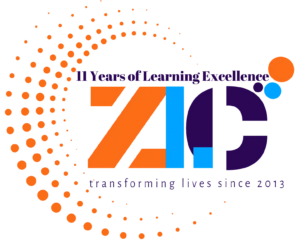Corporate training has two aspects. One revolves around the designing of the course content as well as the delivery. The second is all about measuring the impact of training on the employees.
The ultimate aim of training programs is to bring about an improvement in the employee’s performance and reduce attrition rates. This is where collecting training feedback becomes vital.
Feedback is a key element of Learning & Development programs in more ways than one. First of all, it helps employers evaluate how effective the training had been to upskill the employees. Moreover, it gives employees a sense of ownership of the learning process. Learning culture is ultimately based on timely feedback.
Feedback collection is important no doubt. But it’s equally important to know when and how to collect it.
Challenges of Collecting Training Feedback
Question of Confidentiality
It’s not easy to get candid, no holds barred feedback especially if done through highly public/visible sources like email, printed Q&A forms, etc. Many employees will be unwilling to give their honest, no-frills opinion if they believe they are being recorded.
Poor UX Design
Poorly designed post-training surveys end up having less feedback as learners will be unwilling to participate if they find the surveys difficult to navigate.
Lack of Simplicity
Too much text information and contradictory formats can leave employees confused. As a result, it will be difficult to receive feedback.
Shortage of Time
If you are planning to collect the feedback, distribute it, and keep track of the process manually it can take a huge amount of time.
How to Obtain Training Feedback?
Conduct Anonymous Responses
As we have mentioned before, many if not all employees will be unwilling to be forthright in their feedback (especially if it’s negative) if they think they are going to be recorded and the feedback will be publicized along with their name. If honest feedback is what you are after, then make the feedback anonymous and discreet.
Make Your Question Pattern Diverse
To get precise and objective feedback on issues such as the level of difficulty faced by employees in classes, or how much enjoyable or easy to understand the course had been you can include multiple choice answers for each question.
Allow for Descriptive Answers
Sometimes longer more descriptive answers may be what’s needed. If you need in-depth qualitative feedback then arrange for descriptive answers.
Likert Scale
You have very likely come across questions like “On a scale of 1-10, how likely are you to revisit this restaurant?” or “How likely are you to recommend this course/instructor to a friend?” The Likert Scale may be a great tool to measure the depth of reaction or attitude of participants to a service or product.
Don’t limit feedback to just post-training
Traditionally feedback takes place after the employees have completed the training to measure its effectiveness. However, if you can collect feedback from employees right from the onboarding phase to the concluding one, you will receive valuable insights on how to make your training more impactful.
- Obtain feedback on the goals and objectives of the course. Sometimes employers can have a particular objective in mind when introducing a course while the employees may have a different aim. It’s always good to ensure both you and the workforce are on the same page from day one.
- Ask for reviews on the course structure
Is the course structure too broad or is it more flexible? Does it have scope for small modules? Ask your employees their opinion on how a course should be structured.
- Ask them to review the course content. Is it easy to comprehend? Is it entertaining/engaging? Is it available in their language? Typically course content should not be too dry, heavy, and academic-oriented.
- Class and Instructor Evaluation
After each class (both physical and virtual) ask the learners if they think the class was interactive. Ask them if they enjoyed it or would attend it again. Enquire if the instructor has a good grasp of his/her subject and can communicate effectively.
- UI/UX Navigation and Software Problems
An engaging course and a competent instructor are not the only elements that make a course a hit with the students. Ask employees if they have faced any challenges while downloading or browsing the training app if there are any issues regarding layout, design, functionality, etc. The learning experience can also be affected by things volume levels, and faulty microphones as well.
- Impact
Now we come to the final and most vital phase. In this stage, employees will be expected to give their feedback on whether or not the training has made any noticeable difference to their performance.
Incentivize Feedback
Giving feedback is a time-consuming process. A good way of motivating employees to provide feedback is to attach an incentive to the act of giving feedback. You can promise employees that thoughtful, in-depth feedback will be rewarded with a high employee rating.
Invest in a great LMS
An LMS (Learning Management) can be the ideal tool when it comes to tracking the progress of employees. A quality LMS will provide you with a 360 degree of how much coursework has been completed and also audience engagement metrics. The best LMS comes with not just tracking tools but as inbuilt learner satisfaction evaluation analytics. Through this, you will be able to know which courses are more popular and have helped you meet organizational goals such as reducing attrition and improving performance.
Feedback is the precursor to measuring impact. If a course receives positive reviews regarding engagement and helpfulness from employees, you can probably hope for a positive impact on the performance of the workforce.

